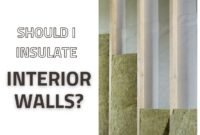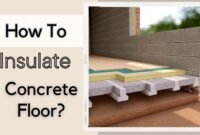Do you plan to use rigid foam insulation noise reduction? If so, then you have come to the right spot! In this article below, you will find how to make rigid foam insulation as a material to soundproof your house. Also, you will learn what the pros are, and the cons are consecutive. So, let’s get started.
Does Rigid Insulation Provide Soundproofing?
The short answer is yes, it does. However, you might ask the internet forum whether it is an effective soundproofing material or not. The answer will never be known until you try it in your home.
Sources mentioned that rigid foam insulation is an effective soundproofing material. It is also easy to set the foam as your soundproof material.
In addition, you can get other benefits from making rigid foam as your rigid sound insulation. The insulation is resistant to fires as well as resistant to pests. So, you can keep the noise from outside from coming into your house, but you can also keep the pests away from entering your home. Double combo, isn’t it?

Now let’s discover how to make rigid foam insulation noise reduction. The procedure will be explained as follows.
- Ensure that your walls aren’t moist/wet
To ensure that the soundproofing insulation works well on your wall, the first procedure is to ensure your walls are in good condition. If there are any moisture issues—such as water seeping through the gaps/cracks, make sure you handle that first before placing the insulation.
- Attach furring strips
After you get rid of any wall moisture problems on the wall and ensure that the wall is dry already, you need to make the furring strips attached to the walls. Make sure that the strips are lined well.
- Cutting and fixing the rigid foam insulation
Now that you have done attaching the furring strips, the next procedure is to cut the insulation foam. Make sure to cut according to the correct size which you have measured.
Now that you have cut the foam according to the size you have previously measured, you need to fix them to the wall you plan to soundproof. To do it, you need to attach it to the furring strips using sealant/nails. Ensure that the foam panels are placed tightly and properly onto the furring strips.
- Filling the empty spaces
As you’ve attached the rigid foam insulation, the next step is to fill the spaces using caulk. The spaces mentioned are the spaces between furring strips and foam panels. This will make sure that the soundproof feature works well.
- Attach a plastic sheet
The last step to installing a rigid foam insulation is by affixing a plastic sheet onto the rigid foam structure. What does this thing do? The plastic sheet acts as the barrier against any moisture problem on the walls. The plastic sheet will also strengthen the sheets of foam insulation.
You need to staple the plastic onto the foam—not the furring strips to attach the plastic. Stapling the plastic onto the foam will make the strips prone to being torn.
What do you think? It is easy to do it, right? So, you don’t have to doubt anymore when installing rigid foam insulation noise reduction. It’s the right investment that can last for a long time.

